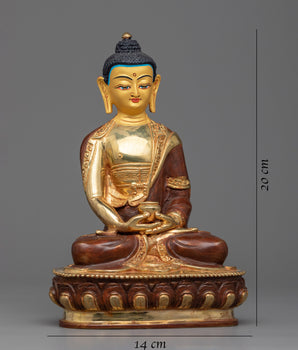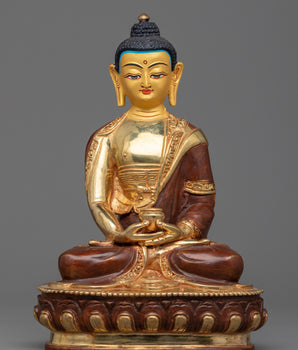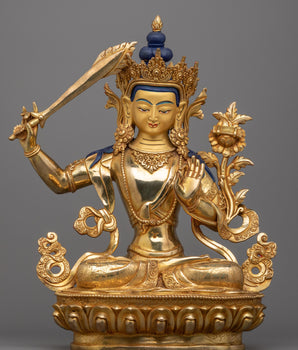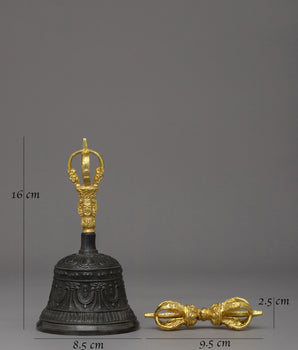









Buddhist Master Mahasiddha Traditionally Carved Statue | Buddhist Sculpture for Shrine

100% AUTHENTIC

HANDMADE

FREE SHIPPING
Buddhist Master Mahasiddha Statue, Spiritual Mastery and Enlightenment Shrine Decor
-------------------------------------------
Size: 5.5”/14 cm (Height) x 4.1”/10.5 cm (Base)
Weight: 0.880 kg
Material: Oxidized Copper Body
-------------------------------------------
About our Statue:
This Mahasiddha figure, crafted from copper and featuring an oxidized finish, accentuates the details of his robes, serene countenance, and symbolic gestures. Every detail, from the flowing drapery to the lotus throne, demonstrates the skill and dedication of master artisans from Patan, Nepal. Its small size makes it a multipurpose artwork, ideal for personal meditation places or as a spiritual gift.
This Mahasiddha statue is ideal for meditation, devotion, or as a collector's piece since it promotes mindfulness and connection to Vajrayana Buddhist teachings. The copper finish adds a sense of accomplishment and knowledge.
In Tibetan and Indian Buddhism, a mahasiddha is a highly esteemed individual who is referred to as a "great adept" or "great accomplished one." These spiritual masters, who represent profound realization and extraordinary powers attained through intensive meditation, tantric practices, and deep understanding, are frequently portrayed as being exceptional. Between the eighth and twelfth centuries, Mahasiddhas combined mystical teachings with practical advice, often defying conventional monastery norms. Their life stories offer a profound understanding of reality, demonstrating their ability to transcend material constraints and exhibit empathy.
Introduction to Mahasiddha:
The Mahasiddhas were extraordinary tantric masters of India, active primarily between the 8th and 12th centuries, whose realizations and unconventional lifestyles profoundly shaped the development of Vajrayana Buddhism. Unlike monastic scholars, Mahasiddhas often lived as wanderers, yogis, artisans, kings, or beggars, demonstrating that spiritual awakening was possible for anyone regardless of social status. Their teachings emphasized direct experience over ritual formalism, using meditation, esoteric practices, and sometimes radical methods to transcend ordinary perception. The lives and teachings of the Mahasiddhas—such as Tilopa, Naropa, Saraha, and many others—form the foundation of many Tibetan Buddhist lineages, symbolizing the union of wisdom, compassion, and spontaneous freedom.
How do you take care of your statues?
• Place them at room temperature, avoiding direct sunlight.
• Make sure that the area where your statue is placed is entirely free of moisture and dust.
• Place it at the highest place on your altar after being consecrated by the Lama/monks. The best practice is to keep them covered inside a glass cabinet.
• Do not use your bare hands or any objects with a rough surface to wipe the face. • Directly touching objects with the bare hand can smudge the face, leaving scratches.




















